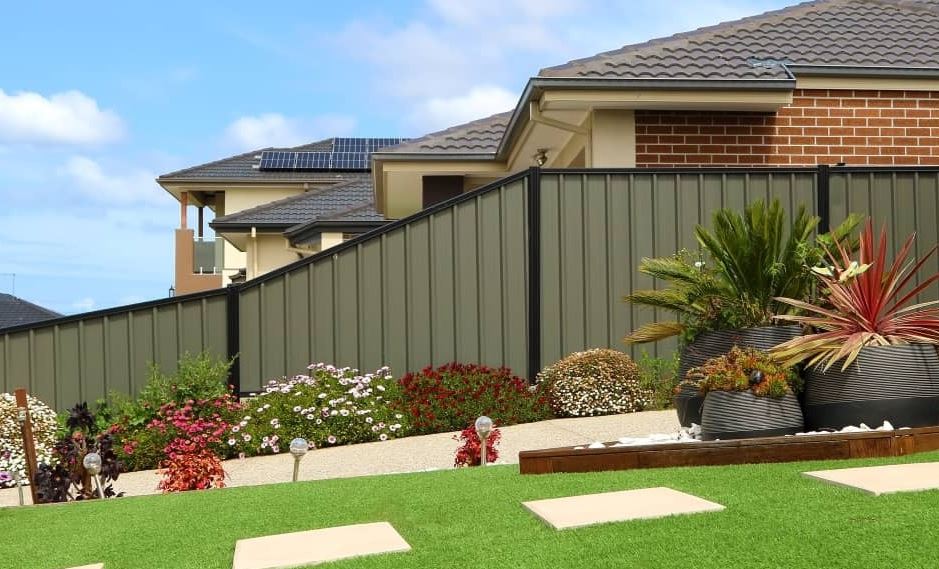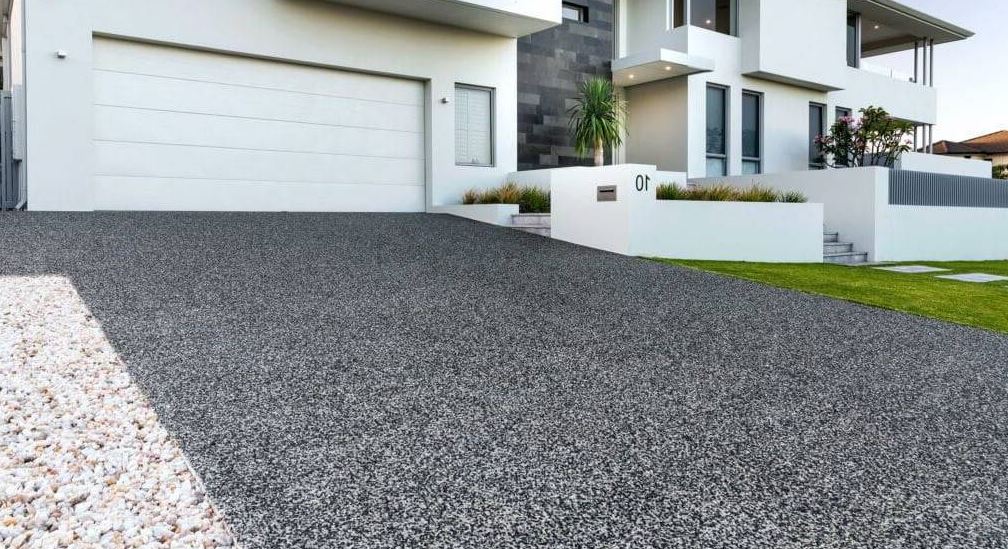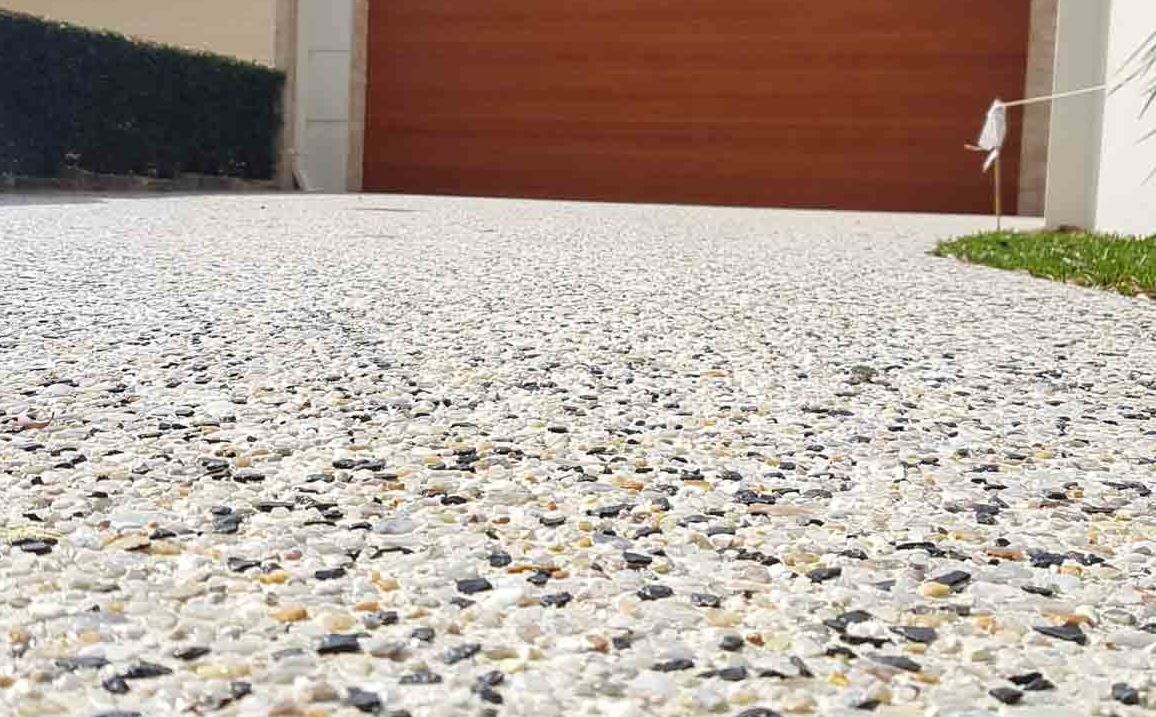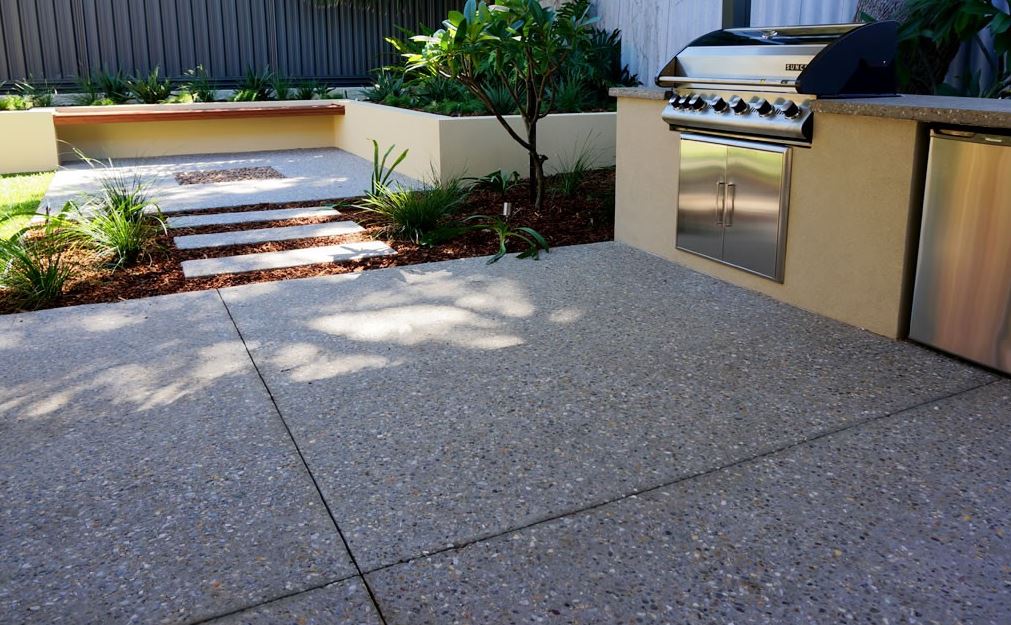The Ultimate Guide to Spray-On Paving: Benefits, Costs, and Applications
Whether you’re a homeowner looking to revamp your driveway, a business owner seeking a durable solution for high-traffic areas, or just curious about the latest paving technology, you’re in the right place.
Spray-on paving, a modern twist on traditional methods, offers a unique blend of durability, aesthetics, and versatility. Gone are the days of settling for plain, uninspiring surfaces. With spray-on paving, the possibilities for customization and creativity are nearly endless. But it’s not just about looks; this method brings many practical benefits that make it a smart choice for residential and commercial applications.
In this guide, we’ll dive deep into spray-on paving. We’ll explore what it is, why it’s gaining popularity, and how it compares to traditional paving methods. From detailed discussions on its benefits to a thorough analysis of costs, we’ve got you covered. Plus, we’ll showcase a variety of applications, demonstrating how spray-on paving can be used in diverse settings, and offer insights into selecting the right service provider for your needs.
So, keep reading, whether you’re considering a new project or just want to stay ahead in the world of modern paving solutions. We promise a journey filled with valuable information, expert insights, and inspiring ideas that will pave the way for your next big project!
What is Spray-On Paving?
At its core, spray-on paving consists of a concrete-based, non-slip coating that is applied over existing concrete surfaces. This coating is typically a blend of modified cement, various aggregates, and colour tints, which can be customised to suit specific aesthetic preferences. The flexibility in design is one of its most appealing aspects, allowing for various colours, textures, and patterns that can mimic everything from brick to natural stone.
The development of spray-on paving can be traced back to the late 20th century when the need for more versatile and decorative paving solutions began to rise. Initially used in commercial settings to upgrade public spaces, it soon spread to residential areas. Homeowners began to see the potential in revamping their driveways, patios, and pool surrounds without needing complete reconstruction.
The application process of spray-on paving is both an art and a science. It starts with the thorough cleaning and repairing of the existing concrete surface. Any cracks or damages are repaired to ensure a smooth base. Then, a primer is applied to help the coating adhere effectively. Depending on the desired finish, The spray-on mixture is applied using specialised equipment, followed by additional texturing or stencilling. Finally, a sealant protects the surface from weather elements and wear.
Benefits of Spray-On Paving
Durability and Longevity
A key advantage of spray-on paving lies in its exceptional durability. Engineered to endure diverse weather extremes, the coating maintains its integrity under scorching heat or icy conditions, effectively resisting cracks and peel-off. This resilience significantly extends the surface’s life significantly, often outlasting traditional paving methods. Additionally, its ability to resist stains and fading ensures that the aesthetic appeal remains intact for years.
Aesthetics
The aesthetic possibilities with spray-on paving are virtually limitless. With a wide range of colours and finishes, it can complement any architectural style or landscape design. Whether a vibrant, eye-catching pattern or a subtle, natural look, spray-on paving can be tailored to match any vision.
Safety and Non-Slip Surface
Safety is a paramount concern, especially in public and high-traffic areas. Spray-on paving offers a non-slip surface, reducing the risk of accidents in wet conditions. This feature makes it ideal for pool areas, walkways, and commercial establishments.
Maintenance
Maintaining a spray-on paved surface is straightforward and cost-effective. It requires minimal upkeep – regular cleaning with basic cleaning agents is sufficient to keep it looking new. Unlike traditional paving, there’s no need for frequent resealing or repair of loose stones or bricks.
Environmental Considerations
Many spray-on paving options are environmentally friendly, incorporating recycled materials in the mix. This aspect reduces waste and minimises the carbon footprint associated with manufacturing new paving materials.
Comparative Analysis: Spray-On Paving vs. Traditional Paving Methods
When compared to traditional paving methods like concrete slabs or asphalt, spray-on paving stands out in several ways.
Concrete and asphalt have been the go-to choices for paving for many years. However, they lack the versatility and aesthetic options offered by spray-on paving. While traditional methods are suitable for straightforward applications, they fall short in customization and design flexibility.
Initially, the cost of spray-on paving may seem higher than traditional methods. However, it proves to be a cost-effective solution in the long run when considering the longevity and reduced maintenance costs. There’s also the added value of aesthetic appeal, which can enhance property values.
Installing spray-on paving is quicker and less disruptive than laying new concrete or asphalt. It can often be completed in a matter of days, depending on the project’s size. In terms of longevity, its ability to withstand wear and tear surpasses traditional methods, making it a smart long-term investment.
Cost Analysis of Spray-On Paving
Understanding the cost of spray-on paving is crucial for anyone considering this option. The cost of spray-on paving is subject to variation influenced by multiple elements, though providing a basic pricing structure aids in forming realistic financial anticipations.
The cost of spray-on paving typically includes preparing the existing surface, materials, labour, and any special design or colour requests. On average, prices can range from moderate to high per square foot. This can add up, particularly for larger areas, but it’s important to consider the long-term benefits alongside the initial outlay.
Several factors can influence the final cost of a spray-on paving project:
- Area Size: Larger areas generally cost more in total, but the cost per square foot can decrease with scale.
- Complexity of Design: Custom designs, multiple colours, and intricate patterns require more time and materials, increasing the cost.
- Location: Costs can vary depending on the region due to differences in labour rates and material availability.
While the upfront cost of spray-on paving might be higher than some traditional methods, the long-term savings are significant. Its durability reduces the need for frequent repairs or replacements. Additionally, the low maintenance requirements save time and money over the years.
Applications of Spray-On Paving
Spray-on paving is not limited to a single use but can be applied in various settings.
Residential Uses
- Driveways: A popular choice for homeowners, spray-on paving can rejuvenate an old driveway, enhancing curb appeal.
- Patios: It offers a customizable and durable surface for outdoor living spaces.
- Pool Surrounds: The non-slip surface makes it safe for wet areas, while the aesthetic options can complement any pool design.
Commercial Uses
- Shopping Centers: Its durability and low maintenance make it ideal for high-traffic areas.
- Public Walkways: The non-slip surface enhances safety in public spaces.
- Corporate Buildings: Adds a professional and polished look to business exteriors.
Specialised Applications
- Sports Courts: Customizable for specific sports requirements.
- Playgrounds: Safe and durable surfaces for play areas.
- Unique Areas: Ideal for customised projects like themed environments or branded spaces.
Choosing the Right Spray-On Paving Service
Selecting the right service provider is as important as choosing the paving method itself:

Key Factors to Consider
- Expertise: Look for a provider with a proven track record in spray-on paving.
- Licensing and Insurance: Ensure they are fully licensed and insured to protect your investment.
- Portfolio Reviews: Review their past projects to assess their quality and style.
A provider’s expertise directly influences the quality of the finished product. Licensing and insurance offer peace of mind, while portfolio reviews give insights into their capability and aesthetic range.
Tips on Getting Quotes and Comparing Services
- Get Multiple Quotes: This helps in understanding the market rate and options.
- Compare Inclusions: Ensure that quotes are comprehensive and include all aspects of the project.
- Check References: Speak to past clients to gauge their satisfaction with the work and service provided.
Care and Maintenance of Spray-On Paved Surfaces
Diligent care and regular maintenance are pivotal in extending both the lifespan and visual quality of spray-on paved surfaces. Here are some essential tips:
Basic Maintenance Tips
- Regular Cleaning: Keep the surface free of debris and dirt by sweeping regularly.
- Prompt Stain Removal: Address spills and stains promptly to prevent them from setting in.
Recommended Cleaning Methods and Products
- Gentle Cleaning: Use a hose and a broom to clean the surface gently. For tougher stains, a mild detergent mixed with water can be effective.
- Avoid Harsh Chemicals: Harsh chemicals can damage the coating. Stick to mild, pH-neutral cleaning solutions.
How to Spot and Address Wear and Tear
- Regular Inspection: Periodically inspect the surface for any signs of wear, such as fading, cracking, or peeling.
- Professional Repairs: For significant wear or damage, consult a professional. Timely repairs can prevent further deterioration.
Spray-on paving represents a modern, versatile, and practical solution for residential and commercial paving needs. The combination of long-lasting durability, visual charm, and low-maintenance demands positions spray-on paving as an ideal solution for a multitude of uses, ranging from revitalising residential driveways and patios to upgrading commercial and public areas.
The key benefits of spray-on paving include its ability to withstand various weather conditions, its vast array of finishes and colours, and its non-slip surface, which ensures safety in high-traffic areas. Additionally, its environmental friendliness and cost-effectiveness over the long term are significant advantages.
We encourage you to consider spray-on paving for your upcoming projects. Whether you want to revamp an old surface or embark on a new construction project, spray-on paving combines beauty, durability, and practicality.
If you’re intrigued by the possibilities that spray-on paving presents, we invite you to contact local providers for more information. Many offer consultations and can provide detailed insights specific to your project. Also, explore further resources to learn more about this innovative paving method. With the right care and provider, spray-on paving can transform your space, adding value and aesthetic appeal that lasts for years.…
Read More »









